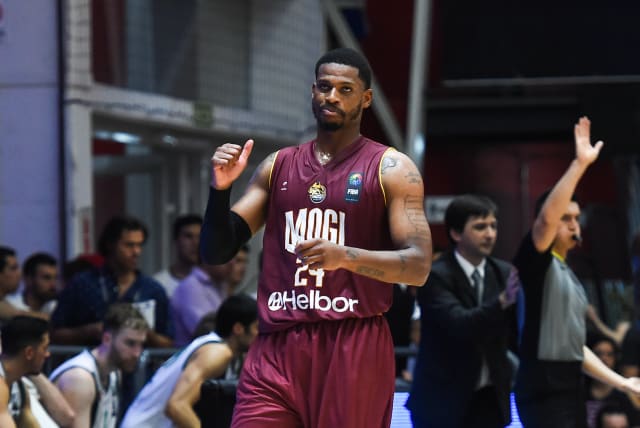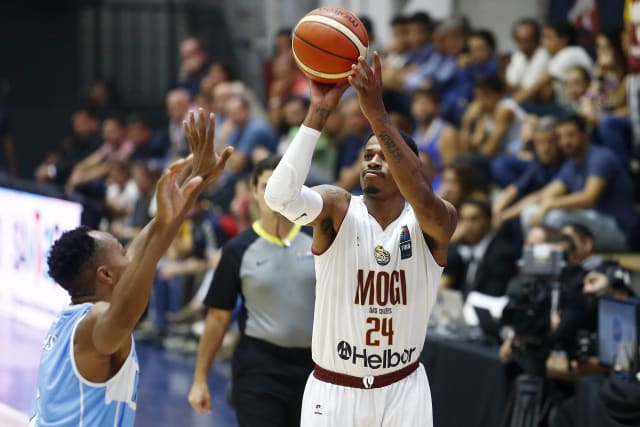Brazil: Shamell's place in the world
That's how Shamell Stallworth's history of his link to basketball starts. Up to here, it’s a similar story than that of several American players that dream of getting to the NBA.
''I was born in Alabama and when I was six months we moved to California, to a place between San Francisco and Fresno. I started to play basketball at 13 or 14, something that's not usual in the United States, because kids usually start younger. I had tried football and track before. I started in Washington Union High School in Fresno, where I was teammate with DeShawn Stevenson for three seasons and we won a pair of state championships. I exploded later in my game, I was in some of the most important camps and from there I was one of the country's ten best shooting guards in collegiate level, behind players like Keith Bogans, Joe Forte, Jamal Crawford, Casey Jacobsen and Jason Kapono. I attended the University of San Francisco, where I played for four years, and I had several ups and downs.''
That's how Shamell Stallworth's history of his link to basketball starts. Up to here, it’s a similar story than that of several American players that dream of getting to the NBA. But Shamell, although he wished for it, knew he wouldn't reach that goal. “I tried to get to the NBA even though I wasn't chosen in the Draft, but I broke my foot on two occasions. I was competitive, I was fast, and I was quite athletic. However, I didn't have the physique nor the height that were necessary to play in the NBA. However, I still tried in some New Jersey Nets, Sacramento Kings and Golden State Warriors camps, but it didn't happen despite I showed my throwing capabilities and a good level of play in general. I gave all that I had. But that's not enough to get to the NBA. You need to have a lot of marketing behind, and I didn't have that. It was hard for me.”
After not being able to get to an NBA team, Shamell concluded his studies in two tracks: Psychology and Business Marketing. He had injured his foot and his mind wasn't focused on basketball. But when he recovered, he tried again. “Then I incorporated to a team with which we traveled to Europe and China to play friendlies against professional teams and I tried to get a job. From that experience I got an offer to play in Brazil and from that moment on I played there 13 of my 15 years as a professional.”

The first team that became interested in Shamell was Uniara de Araraquara — a team that doesn't compete professionally anymore —, where he played for six months. “It was hard because it was a culture that was very different to what I knew. I decided to go back to the United States to give myself a try at the NBA G League, but it didn't work out. I thought about leaving basketball forever. In fact, I started to do other jobs, like being a financial advisor in a bank,” says Shamell. But a second call came from Brazil, this time, from Paulistano. “They called me to play and I thought, ‘Why not?’” My mother encouraged me to accept the proposal. And as soon as I arrived, I found myself in a conflict. The coach, who was José Neto, didn't want me in the team. The general manager, Claudio Mortari, was the one who had sought me, and he would later be my coach in Pinheiros. Despite the initial negative reaction, Neto started to get to know me and realize how competitive I am. I showed him that I'd play and give everything to him, whether he wanted me or not. And like that, I earned his respect. I worked very hard and played for three years in Paulistano with José, and I built a friendship with him, as my coach.”
His stay in Paulistano secured his career. Now it was certain that Shamell was a valued player in Brazil. However, the shooting guard decided to migrate to bolster his career in Europe. He played for a year in Croatia, at KK Zadar. “I had a good season, we competed well in the Cup and we won the Croatian league.” His following destination was China, where he played 4 months at Zhejiang Cyclone “but it wasn't for me. That wasn't basketball. The foreign players only wanted to play one on one, shoot a lot to the rim, and improve their statistics. Meanwhile I was in a place where I didn't feel comfortable, and I couldn't see my two children grow in Brazil. They started to walk, and I wasn't there to enjoy that moment with their mother,” Shamell remembers.
The player canceled his contract in China and came back to Brazil to play for Limeira. There he won the Paulista Championship. Then he moved to Pinheiros, the club with whom he'd get to the highest place in the Americas. “We made history there. We won the 2013 Liga de las Américas, we played two consecutive Final Fours and we had the opportunity of playing at the Intercontinental Cup against Olympiacos. Although we did have several good games, I realized the level of the great European teams. I talked to Vasilis Spanoulis and that conversation made me understand that many great players aren't interested in the NBA but rather in building a career in Europe and being important for their national team.”
That glorious time in Pinheiros ended in 2014 when Shamell arrived at the place that he since calls home: Mogi das Cruzes. “We achieved things that the club had never done. We won the Liga Sudamericana and were in two Final Fours of Liga de las Américas, which was very complicated. People think it's easy, but it's the complete opposite.” In each international triumph, both in Pinheiros and Mogi, Shamell was named the MVP.

So many years in Brazil have transformed that Alabama boy into a man with several South American traditions. “I love to eat carne asada, although I don’t know how to cook it. I also like Brazilian music and culture. What I don't enjoy is going to the beach, something that people love there. And much less wearing a sunga,” says Shamell, who hasn’t yet mastered the Portuguese language and chooses English to talk in his interviews.
Mogi das Cruzes’ performance in this edition of the continent’s most important club competition was shocking. After being runners-up in 2018, they went to a renovation in their team and were quickly eliminated, with 3 defeats in the Group C that played in Valdivia, Chile. “It's not easy to rebuild a team. We enjoyed a great team last year. We had Larry Taylor, Jimmy Oliveira, and Tyrone Curnell, who was at an excellent level. If we’d been champions, he would've been the MVP. Now there are many young players. João Paulo Batista and I are the veterans that try to guide them, but it requires time and a lot of work to recover that chemistry. It's difficult even for NBA teams that change a lot of players,” Shamell explains.
If you think about the players that are the most representational of the history of Liga de las Américas, one of them is, without a doubt, Shamell. He has no doubts about it either. “I'm one of them,” he assures and laughs. “I like this competition. I like the environment. I already know a lot of rivals, referees and journalists. I was in this tournament for the last nine years. I talk to Argentine, Puerto Rican and Mexican players. I have a good time here. I'm getting old,” says Mogi's leader between laughs.
Shamell isn’t sure up to when he’ll be playing basketball: “I see Michael Hicks at 42 and I don't know if I’ll get there, but surely I’ll be playing for a couple of more years.” What’s clear is that it’ll be a strange feeling when he's not playing and Liga de las Américas doesn't have Shamell as one of its shining stars.
FIBA